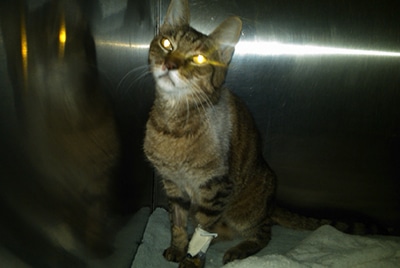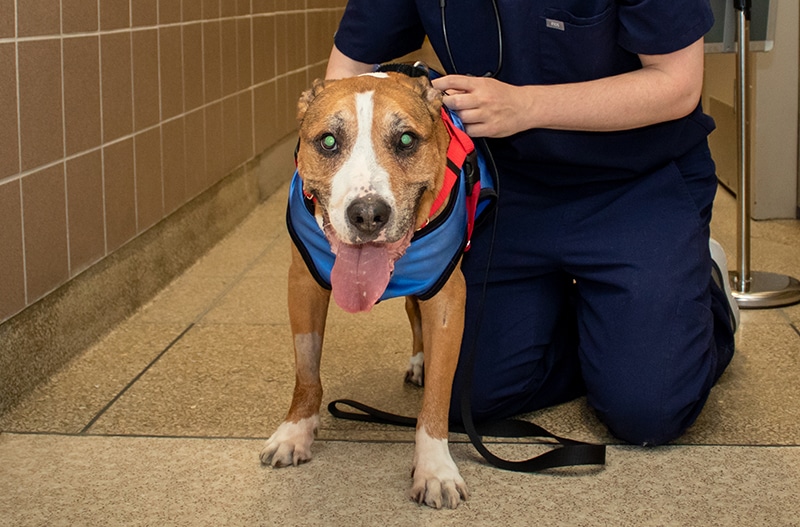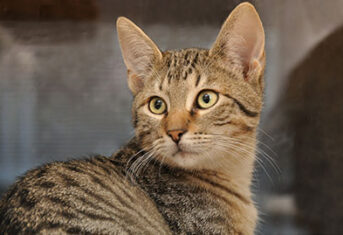Why Does My Cat Have Devil Eyes Whenever I Photograph Her?

Why Does My Cat Have Devil Eyes Whenever I Photograph Her?
June is Adopt a Cat Month so this month’s blogposts are all dedicated to our feline friends. Last week, I wrote about the top ten most common diseases in cats. This week, I’ll focus on a problem that bedevils amateur photographers trying to get the perfect photo of their cat. We want to capture their eyes looking lovingly at us but, in low light situations, all we get is evil-looking devil eyes. What causes the devil eye look in cats, and is it normal?
Tapetum Lucidum
The reflection of your camera’s flash from your cat’s eyes is due to the tapetum lucidum. This is a reflective layer behind the retina that amplifies vision when light levels are low. In low light situations (exactly the conditions where your camera uses the flash), your cat’s pupils dilate to let in more light, and the tapetum reflects that light back at the retina to improve vision. Your camera picks up the reflected light, giving your cat the devil eye appearance.
Other Animals with a Tapetum Lucidum
The tapetum is one adaptation of animals to low light conditions. Other low light adaptations include large eyes and a large pupil, exemplified in the owl. Animals with these adaptations are typically nocturnal animals, like cats, but dogs, deer, cattle, horses and ferrets also have tapeta. Aquatic species commonly have a large tapetum to allow them to see in the dark, murky depths. However, primates (i.e. you!), squirrels, kangaroos and pigs don’t have this adaptation.

Not All Tapeta are the Same
My cat patient in the photo accompanying this blogpost has a normal yellow green reflection from his tapetum. The color of tapeta varies between and within species. For example, Dalmatians don’t have a tapetum. In general, puppies have a blue tapetum until they are about 4 months of age. Siamese and other color dilute cats may lack pigment in the non-tapetal area of the retina causing a camera flash to give a red color to their devil eyes. Taurine, an essential amino acid for cats, helps the feline tapetum stay healthy. When taurine deficiency was common in cats, we commonly recognized a tapetal abnormality which clued us in to taurine deficiency.
How to Prevent Devil Eyes in Your Cat Photos
Now that we know the cause of your evil-looking cat photos, we can take a few steps to prevent them. Since cats rely on their tapeta in low light situations, avoid low light situations to get the best shots. Also, be sure to disable the flash on your camera to avoid glowing tapeta reflections. Taking photos of your pet at their eye-level can also reduce the eye glare from overhead lighting sources.
In some cases, you can use the “red eye removal” feature on your camera or photo app to reduce your cat’s devil eyes, but this feature is optimized for human red eye so it may not work on the multi-color tapeta reflections of your furry family members.

Learn More About Animal Eyes
Interested in learning more about animal eyes? The Museum of Vision has a great, free resource for you.
And we have lots of resources and videos about specific eye conditions, such as red eye, cataracts, and vision loss on AMC’s Ophthalmology Service webpage.































